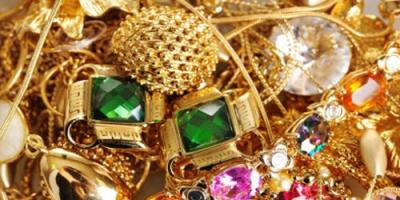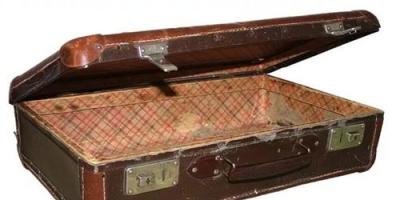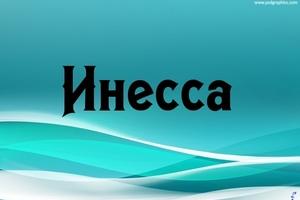Payment.
Payment can be made in several ways:1. Cash to the courier on site upon receipt of the goods.
(Moscow, Moscow region, St. Petersburg, Leningrad region).
2. According to a bank receipt.
3. By bank card online. (For individuals).
4. Cashless payment, bank transfer Money to our bank account.
Delivery.
Delivery in Moscow and the Moscow region by courier.Delivery throughout St. Petersburg and the Leningrad region by courier.
Delivery is carried out by courier from Monday to Sunday, 7 days a week.
You can choose the delivery time:
from 10:00 to 16:00 - first half of the day;
from 16:00 to 21:00 - afternoon.
In most cases, delivery is made the next day after ordering.
Pickup.
You can pick up your order yourself from our office for free. Please notify the operator accepting the order that you would like to pick up your order and agree on the time and possibility of visiting the office, as well as the availability of goods in the office on your desired date. If you do not pick up your order within the agreed pickup date, the order will be cancelled. Claims regarding the availability of goods in this case will not be accepted.
Delivery by Post or transport companies throughout Russia.
THE GOODS WILL NOT BE SENT BY COD ON COD.
The cost of delivery of goods is calculated individually and depends on the weight, dimensions of the goods, methods and timing of its delivery, and dispatch distance.
Delivery cost in Moscow and the Moscow region by courier:
Delivery in Moscow - 300 rubles.
Delivery in Moscow outside the Moscow Ring Road - 350 rubles.
Delivery in the near Moscow region at a distance of up to 10 km from the Moscow Ring Road - 500 rubles.
Delivery in the far Moscow region at a distance of 10 km from the Moscow Ring Road - 600 rubles. Delivery only to the railway station!
Delivery to Zelenograd and throughout the territory of “New Moscow” outside the Moscow Ring Road - the possibility and cost of delivery in agreement with the manager from 600 rubles.
Pickup is free.
Delivery cost in St. Petersburg and the Leningrad region by courier:
Delivery within St. Petersburg - 300 rubles.
Delivery in St. Petersburg outside the Ring Road - 350 rubles.
Delivery to Peterhof, Pushkin, Pavlovsk, Sestroretsk, Zelenogorsk, Vsevolozhsk, Gatchina, Kolpino, Kirovsk, Krasnoye Selo, Kronstadt and in remote areas cities, towns: Metallostroy, Shushary, districts of St. Petersburg and the Leningrad region - delivery cost from 600 rubles, in some cases in agreement with the manager.
Delivery in the Leningrad region - at a distance of 10 km from the Ring Road - 600 rubles. Delivery only to the railway station!
Delivery large cargo- possibility and cost of delivery as agreed with the manager.
Urgent delivery is possible - delivery costs are subject to agreement with the manager.
Pickup is free.
Attention! When confirming your order by phone or email, please ensure that your details are accurate. The courier will definitely contact you via contact numbers (usually an hour or two) before delivery. Please don't turn off your phone and stay in touch. If the courier cannot get through, delivery will not be carried out!
Delivery across Russia.
Please, after placing your order by email, carefully read all the conditions for receiving the order again. These conditions will be written in the comments to the order. We kindly ask you to indicate the full last name, first name, patronymic of the recipient and full postal address indicating the postal code when placing an order.
DO NOT FORGET TO CHECK THE EMAIL ADDRESS WHICH WAS SPECIFIED IN YOUR ORDER. WE WILL SEND A RECEIPT FOR PAYMENT AND WILL INFORM THE STATUS OF THE ORDER. WE DO NOT CALL TO THE REGIONS! ALL CORRESPONDENCE IS BY EMAIL.
Delivery of orders is carried out:
By Russian Post - to your post office (at Russian Post rates).
You pay the cost of the order + shipping (at Russian Post rates) + delivery of the order by courier to the post office + packaging in a corrugated box or package (the price depends on the volume of the order).
EMS by Russian Post with delivery to the address you specified (according to EMS Russian Post tariffs).
You pay the cost of the order + shipping (at EMS Russian Post rates) + delivery of the order by courier to the post office + packaging in a corrugated box or package (the price depends on the volume of the order).
Transport company (if the city is included in the service area of the selected transport company).
You pay the cost of the order + delivery of the order by courier to the terminal in Moscow. The cost of transportation (according to the tariffs of the transport company) - you pay upon receipt at the terminal in your city.
Transport companies we cooperate with:
EMS Russian Post, Autotrading, Gruzovozoff, Business Lines, Russian Post, PEC, Energy, FASTtrans, Zheldoralyans, SPSR, DAC, etc.
Delivery within Russia is made after full payment for the selected goods. After confirming the order, the operator sends a completed payment receipt form by email. You pay the receipt at the bank. After the money is received in our bank account, the order is sent to the address you specified within one to five business days.
If you agree with the terms of payment and delivery, please provide the following information when placing and sending us an order:
1. selected delivery method,
2. full last name, first name, patronymic of the recipient, telephone number,
3. full postal address including postal code,
4. when sending an order by a transport company - the selected company and your passport details.
In a response letter we will send you a receipt for payment of the order indicating its full cost.
Once payment is received in our account, the goods will be shipped. The manager will contact you and inform you of the postal identifier or delivery note number to control the progress of the shipment.
For the fastest possible dispatch of your order, you can send an email to: [email protected]
scanned receipt of the paid receipt.
THE PAYMENT RECEIPT IS VALID FOR 3 CALENDAR DAYS AFTER RECEIPT.
IF YOU PAY YOUR RECEIPT LATER THIS DATE, THE AVAILABILITY OF THE GOODS IS NOT GUARANTEED!
Detailed map and travel options in the section
“A beloved child has many names,” says the Swedish proverb. Much the same can be said about the traditional Swedish costume. At first glance, it will seem that the same clothes have many different names. Folkdrekt, Landskapsdrekt, Sokkedrekt, Bygdedrekt or Hembygdsdrekt, Heradsdrekt. National costume, Provincial costume, Costume of a specific province or, for example, Folkdanskostyumer, folk dance costumes.
In this material we will talk about the GENERAL NATIONAL SWEDISH COSTUME (Allmenna svenska nachunaldrekten)...
The photo above is typical Swedish National Costume- Dean Svenska Drekt (Your Swedish Costume)
He was "designed" Merta Jorgensen in 1903. Märtha Jørgensen (Palme) (1874–1967) was the daughter of a wealthy businessman from Norrköping. In 1900, she became a gardener's apprentice and ended up at the royal residence of Tulgarn, in the province of Södermanland. In this castle she saw Princess Victoria of Baden-Baden. The future queen tried to demonstrate her belonging to the new national culture and wore costumes created in the folk style - variations of the costumes of the parishes of Vingåker and Österåker, as well as variations of the traditional costume of the inhabitants of the island of Öland. The same dresses were worn by court ladies. This was the inspiration for Martha Palme, the impetus for the creation of a women's national costume.
Already in 1901, she was looking for like-minded people to bring to life the main idea - to create a national costume and distribute it in wide circles. In 1902, Martha Jørgensen created the Swedish Women's National Costume Association (SVENSKA KVINNLIGA NATIONALDRÄKTSFÖRENINGEN). The society's task was to reform clothing. In contrast to French fashion, it was necessary to create a new dress, designed in accordance with the principles of practicality, hygiene, and most importantly - original “Swedishness”. "Why shouldn't we wear our fine peasant costumes?" - writes Martha Jorgensen. So, the suit was created...
Merta described her creation this way: the costume was designed in accordance with the principles of perception by different people, but naturally within reasonable limits. This meant that the Dean Svenska Drekt could come in two designs.
So a very beautiful women's outfit was created, which included a skirt and bodice, distinguished by an intense blue color. The obligatory material for such a costume was wool, but an option with a red bodice was also proposed. The yellow apron, combined with a blue skirt, was supposed to symbolize the Swiss flag. The bodice must be decorated with embroidery that would reflect the rich national past. The skirt and bodice could be either sewn or worn separately. A mandatory attribute of the costume was a belt, which was distinguished by a silver buckle. But at the bottom of the skirt there was a wide edging, the same color as the bodice of the suit. According to Jorgensen's idea, the shirt must include a wide collar, and the headdress must be particularly white. But the color of stockings and shoes was black; anything else was not welcome.
The initially accepted design was a skirt with a laced vest as separate pieces.
The second option, adopted later, is a short bodice and skirt, worn together, a design from the Wingaker County.
Skirt and bodice - Swedish blue or skirt of blue color, and the bodice is bright red, with national embroidery, reflecting the rich national past. Blue and yellow(apron) made of wool should be a muted color of the Swedish flag (not such a bright color modern materials). The apron represented the main and central part of the costume; it was made of linen, cotton, crepe or silk. They also wore bright aprons, caps trimmed with lace and thin woolen scarves on their shoulders.
From jewelry preference was given to large round silver brooches.
The men's suit consisted of narrow yellow or green short pants (just below the knees), long woolen stockings, thick-soled shoes with large metal buckles, a short cloth or suede jacket, a vest with metal buttons and a characteristic woolen knitted hat with pompoms.
The bright colors of the Swedish flag, according to Merta, are exactly what the entire Swedish people needed. They had an invigorating effect on the national feelings and contrasted beautifully with the deep colors of Swedish nature - the green pine forest and the cold white snow. With a suit you must wear one of two hats, stockings - black, if there is no red in the suit, then the stockings are red. Shoes preferably with straps or laces, black, never yellow.
Thanks to the efforts of Merta Jørgensen, artists Gustav Ankarkron, Anders Zorn and Karl Larsson, the SWEDISH NATIONAL COSTUME was developed and introduced as a standard in 1903 in Falun (Dalarna County). The colors of the clothing items were taken from the Swedish national flag. However, the costume has been widely accepted as the National Costume, having in fact existed since the 1900s, after Her Majesty Queen Silvia wore it on June 6th National Day in 1983.
Both simple girls... and princesses wear national clothes!
The costume, which was forgotten after the First World War, began to be revived in the eighties of the last century. This costume has not completely lost its fans: Swedes wear it on national holidays. This outfit can also boast of its amazing luxury at beauty contests. The most attractive thing about this costume is that it reflects Sweden, it is replete with the colors of the national flag and symbolic embroidery. And the very fact that it is still a symbol of this rich country speaks of its magnificence.
It is worn by both ordinary citizens... and princesses...
Both old and young... Traditions continue to live!
Now let's dance with the Swedes!
Original post here: http://www.liveinternet.ru/users/natali_soler/post179450634/
Copy only with permission of the author!
 “A beloved child has many names,” says the Swedish proverb. Much the same can be said about the traditional Swedish costume. At first glance, it will seem that the same clothes have many different names. Folkdrekt, Landskapsdrekt, Sokkedrekt, Bygdedrekt or Hembygdsdrekt, Heradsdrekt. National costume, Provincial costume, Costume of a specific province or, for example, Folkdanskostyumer, folk dance costumes. In this material we will talk about the GENERAL NATIONAL SWEDISH COSTUME (Allmenna svenska nachunaldrekten)...
“A beloved child has many names,” says the Swedish proverb. Much the same can be said about the traditional Swedish costume. At first glance, it will seem that the same clothes have many different names. Folkdrekt, Landskapsdrekt, Sokkedrekt, Bygdedrekt or Hembygdsdrekt, Heradsdrekt. National costume, Provincial costume, Costume of a specific province or, for example, Folkdanskostyumer, folk dance costumes. In this material we will talk about the GENERAL NATIONAL SWEDISH COSTUME (Allmenna svenska nachunaldrekten)...  In the photo above is a typical Swedish national costume - Din Svenska Drekt (Your Swedish Costume) It was “designed” Merta Jorgensen in 1903. Märtha Jørgensen (Palme) (1874-1967) was the daughter of a wealthy businessman from Norrköping. In 1900, she became a gardener's apprentice and ended up at the royal residence of Tulgarn, in the province of Södermanland. In this castle she saw Princess Victoria of Baden-Baden. The future queen tried to demonstrate her belonging to the new national culture and wore costumes created in the folk style - variations of the costumes of the parishes of Vingåker and Österåker, as well as variations of the traditional costume of the inhabitants of the island of Öland. The same dresses were worn by court ladies. This was the inspiration for Martha Palme, the impetus for the creation of a women's national costume.
In the photo above is a typical Swedish national costume - Din Svenska Drekt (Your Swedish Costume) It was “designed” Merta Jorgensen in 1903. Märtha Jørgensen (Palme) (1874-1967) was the daughter of a wealthy businessman from Norrköping. In 1900, she became a gardener's apprentice and ended up at the royal residence of Tulgarn, in the province of Södermanland. In this castle she saw Princess Victoria of Baden-Baden. The future queen tried to demonstrate her belonging to the new national culture and wore costumes created in the folk style - variations of the costumes of the parishes of Vingåker and Österåker, as well as variations of the traditional costume of the inhabitants of the island of Öland. The same dresses were worn by court ladies. This was the inspiration for Martha Palme, the impetus for the creation of a women's national costume. 

Already in 1901, she was looking for like-minded people to bring to life the main idea - to create a national costume and distribute it in wide circles. In 1902, Martha Jørgensen created the Swedish Women's National Costume Association (SVENSKA KVINNLIGA NATIONALDRÄKTSFÖRENINGEN). The society's task was to reform clothing. In contrast to French fashion, it was necessary to create a new dress, designed in accordance with the principles of practicality, hygiene, and most importantly - original “Swedishness”. "Why shouldn't we wear our fine peasant costumes?" - writes Martha Jorgensen. So, the suit was created...

Merta described her creation this way: the costume was designed in accordance with the principles of perception by different people, but naturally within reasonable limits. This meant that the Dean Svenska Drekt could come in two designs.



So a very beautiful women's outfit was created, which included a skirt and bodice, distinguished by an intense blue color. The obligatory material for such a costume was wool, but an option with a red bodice was also proposed. The yellow apron, combined with a blue skirt, was supposed to symbolize the Swiss flag. The bodice must be decorated with embroidery that would reflect the rich national past. The skirt and bodice could be either sewn or worn separately. A mandatory attribute of the costume was a belt, which was distinguished by a silver buckle. But at the bottom of the skirt there was a wide edging, the same color as the bodice of the suit. According to Jorgensen's idea, the shirt must include a wide collar, and the headdress must be particularly white. But the color of stockings and shoes was black; anything else was not welcome.

The initially accepted design was a skirt with a laced vest as separate pieces.
The second option, adopted later, is a short bodice and skirt, worn together, a design from the Wingoker district.
The skirt and bodice are Swedish blue or the skirt is blue and the bodice is bright red, with national embroidery reflecting the rich national past. The blue and yellow wool (apron) should be a muted color of the Swedish flag (not such a bright color of modern materials). The apron represented the main and central part of the costume; it was made of linen, cotton, crepe or silk. They also wore bright aprons, caps trimmed with lace and thin woolen scarves on their shoulders.
Among jewelry, preference was given to large round silver brooches.
The men's suit consisted of narrow yellow or green short pants (just below the knees), long woolen stockings, thick-soled shoes with large metal buckles, a short cloth or suede jacket, a vest with metal buttons and a characteristic woolen knitted hat with pompoms.


The bright colors of the Swedish flag, according to Merta, are exactly what the entire Swedish people needed. They had an invigorating effect on national feelings and contrasted beautifully with the deep colors of Swedish nature - green pine forest and cold white snow. With a suit you must wear one of two hats, stockings - black, if there is no red in the suit, then the stockings are red. Shoes preferably with straps or laces, black, never yellow.



Thanks to the efforts of Merta Jørgensen, artists Gustav Ankarkron, Anders Zorn and Karl Larsson, the SWEDISH NATIONAL COSTUME was developed and introduced as a standard in 1903 in Falun (Dalarna County). The colors of the clothing items were taken from the Swedish national flag. However, the costume has been widely accepted as the National Costume, having in fact existed since the 1900s, after Her Majesty Queen Silvia wore it on June 6th National Day in 1983.



Both simple girls... and princesses wear national clothes!
The costume, which was forgotten after the First World War, began to be revived in the eighties of the last century. This costume has not completely lost its fans: Swedes wear it on national holidays. This outfit can also boast of its amazing luxury at beauty contests. The most attractive thing about this costume is that it reflects Sweden, it is replete with the colors of the national flag and symbolic embroidery. And the very fact that it is still a symbol of this rich country speaks of its magnificence.


It is worn by both ordinary citizens... and princesses...
Both old and young... Traditions continue to live!

"Island of Ireland" - In 1801, Ireland became part of the United Kingdom of Great Britain and Ireland. Project. Spread of Christianity in Ireland. Proclamation of Ireland as an independent republic. Oliver Cromwell's atrocities in Ireland. Patrick. Conquest of part of Ireland by England. The Irish language began to be replaced by English.
“Real Estate of Estonia” - A leasing system may be a way out of the situation. Dance halls with live music and discos on the seashore. Beautiful beach and clear sea. 3. Commercial real estate. Mortgage loans are issued at 3-5% per annum in euros for up to 40 years. What benefits does registering a business in Estonia give to Russian entrepreneurs?
“Country Finland” - Here, in the town of Rovaniemi. The home of Santa Claus is located. The country is located between Russia, Sweden and Norway. Flag. Weather. The Baltic Sea coast is beautiful. A third of Finland lies north of the Arctic Circle. Across the Gulf of Finland is Estonia. What is it famous for? Here in summer, as a rule, it is +20C, and in winter it is rarely below -3C.
"City of Kouvola" - Active lifestyle. Myllykosken Pallo -47 Major league football in Myllykoski. KooKoo Masters hockey in the Kouvola indoor skating rink. Cultural program 2010. Annually approx. 4000 conscript soldiers Total contributions approx. 94 million. Kymi River. Places for sports. Sister cities: Vologda, Russia Mülheim, Germany Balatonfured, Hungary.
“Region Northern Europe” - the 9th-11th centuries are called by historians the heyday of the Viking Age. Task No. 2: define fjords (study Topic: Task No. 1: Look at the picture and try to describe what you see. A natural feature of the countries in the region is the presence of fjords. Name a historical feature of the inhabitants of Northern Europe. The Vikings settled on the island.
"Education in Finland" - Preschool education. 1917 Finland declares independence on December 6, 1917. Milestones in history. Justice. 1828 The only university in Finland is moved from Helsinki to Turku. Variability in student achievement (mathematics). Basic Education Reform Act of 1968 How They Used to Think About Us...
There are a total of 17 presentations in the topic
Modern politics is successfully trying to adapt folk culture to the requirements of the time, creating new national traditions. Thus, some artificially created attributes, including clothing, become a symbol of the nation’s identity.
Introduction
To begin with, it should be noted that the concept of “national costume” and “costume of the common people” is far from the same thing. Folk, strictly speaking, can be called characteristic clothing that is worn in a certain limited area. Of course, it cannot be said that all peasants dressed in uniforms, like in the army, but individual features in clothing, of course, were present.
Today, the concept of “national costume” includes clothing modeled at the intersection of the 19th and 20th centuries, which is based on a sample of peasant costume. For example, the Swedish national costume appeared in the 1920s.
By this time, the usual peasant costume had practically fallen out of use, because due to the development of communication and the growth of the urban population, people began to wear different clothes. And only at the beginning of the 20th century, the highest circles of the aristocracy and government, influenced by the fashion for “neo-romanticism,” paid attention to the traditional clothing of peasants.
Swedish national costume
The author of the Swedish national women's costume is Märta Jørgensen, with the support of artists Gustav Ankakron and Carl Larsson. The costume consists of a skirt and bodice made of blue wool (there is an option with a red bodice). An apron made of yellow fabric is worn with the skirt. The combination of blue and yellow symbolizes the Swedish flag. The bodice of the suit is decorated with embroidery.
As a variation, use is not allowed individual elements(skirts and bodice), and a one-piece model in the form of a sundress. In this case, the waist is emphasized with a homespun belt decorated with a silver buckle. The suit is completed with a white shirt with a wide collar, black shoes and white stockings.

Swedish royal family national costume

National costume - modern look


The national costume of Sweden experienced a rebirth in the 70s of the last century. Today it is considered festive clothing and is worn mainly for formal events by princesses, as well as beauty pageant winners who proudly display their beauty in national attire.









